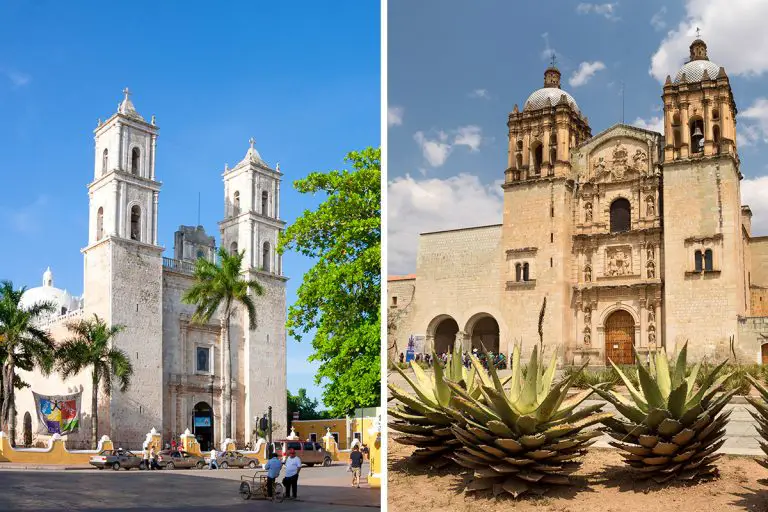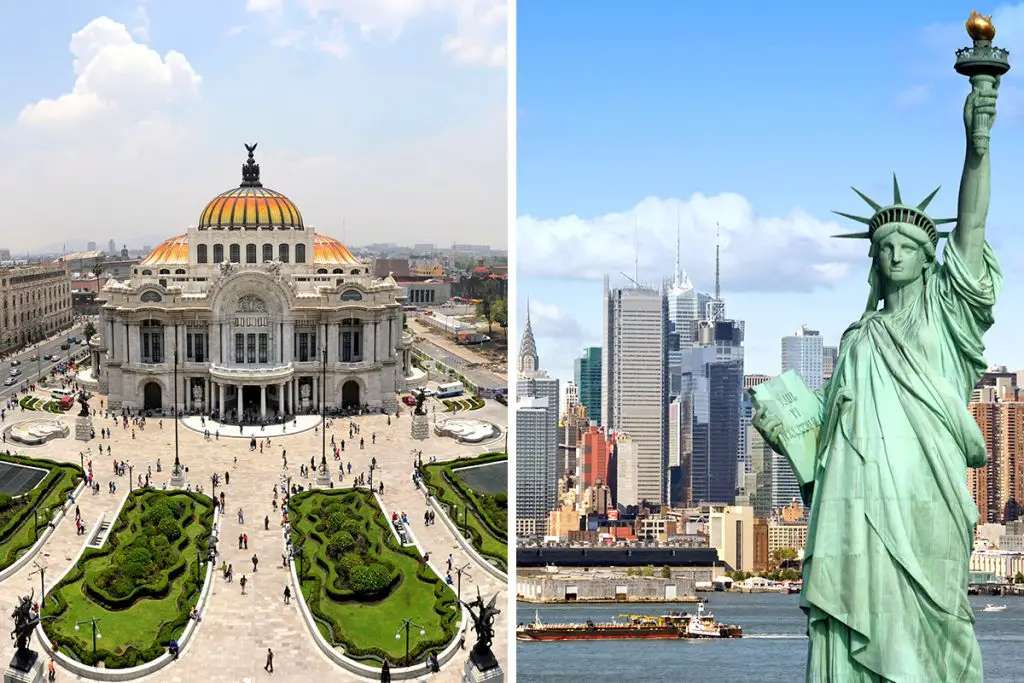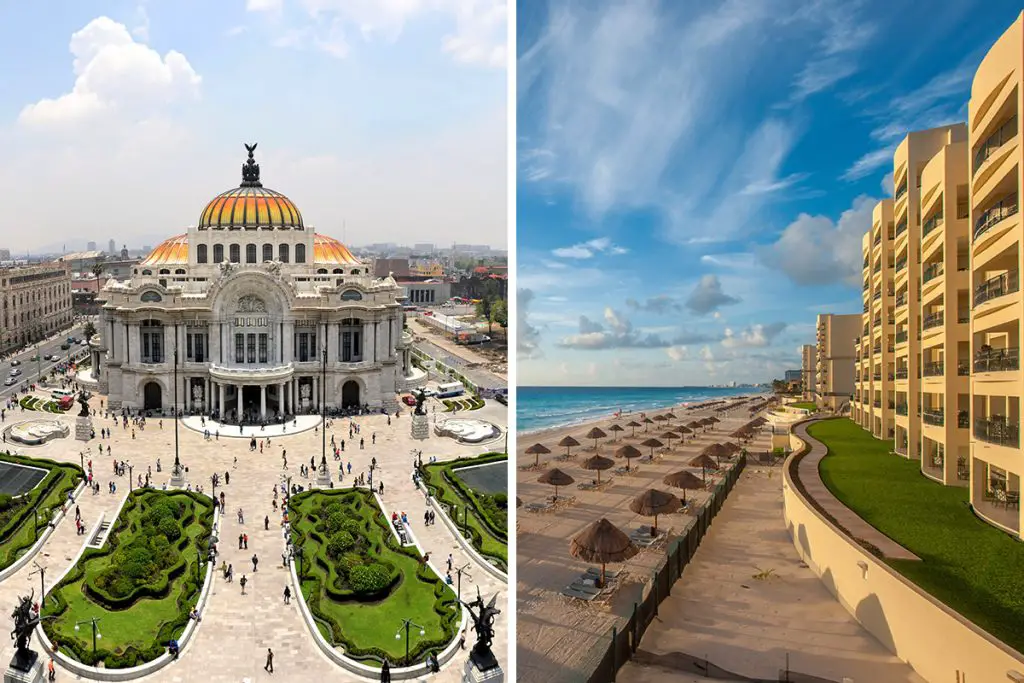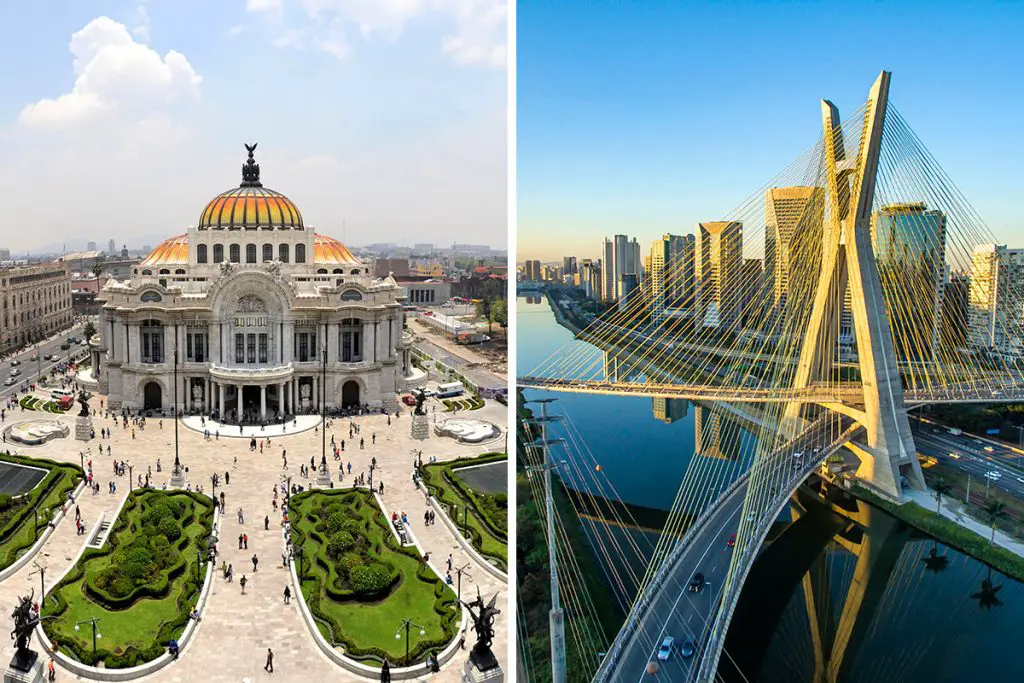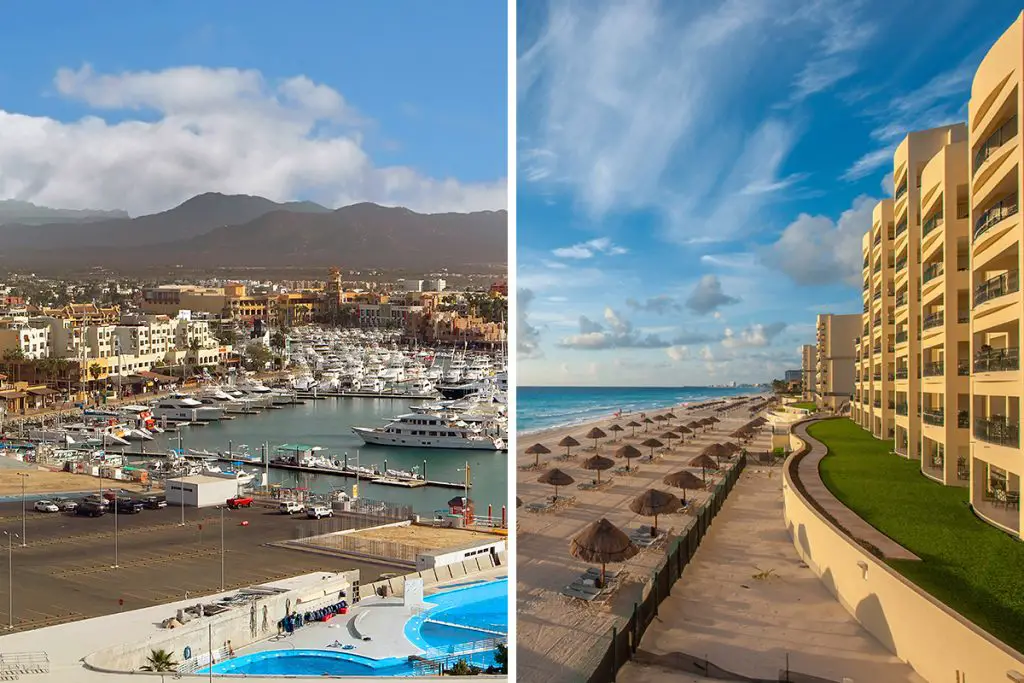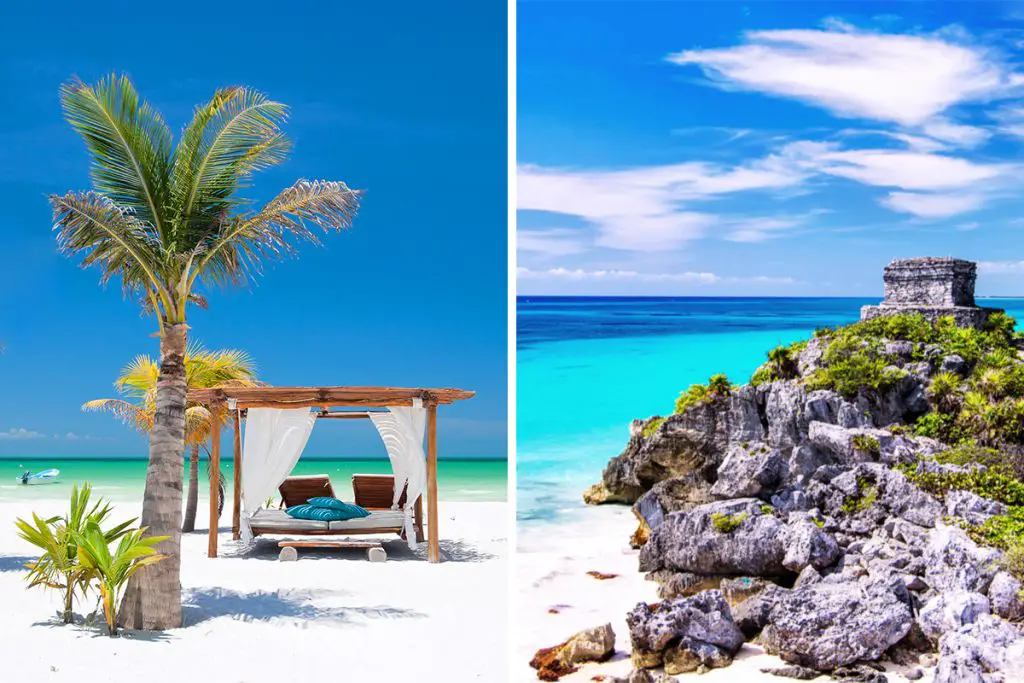Feel the pulse of history and culture come alive as you dig deeper into what sets these two places apart. Ready? Let’s dive in.
History & Culture
First off, when it comes to history and culture, both Merida and Oaxaca are treasure troves waiting to be explored. Each city tells a story that reaches back in time, intertwining the past with the present in an enchanting blend. But, let’s be honest; not all stories are told the same way.
Merida, situated in the Yucatan Peninsula, is a gateway to the Mayan world. As you wander its streets, you’ll notice an abundance of colonial architecture. These structures often serve as a backdrop for performances of traditional Mayan dances and folklore.
The city is like a living museum where Spanish colonial elements and Mayan traditions co-exist harmoniously. Don’t be surprised if you hear the Yucatec Mayan language spoken alongside Spanish.
Oaxaca, on the other hand, is a kaleidoscope of indigenous cultures. It is one of the most ethnically diverse states in Mexico, home to numerous indigenous communities like the Zapotec and Mixtec.
While walking through the city, the influence of these cultures is palpable in the arts, crafts, and even in the spoken languages, which go beyond Spanish to include a variety of indigenous tongues.
Comparing the two, Merida leans more towards a fusion of Mayan and Spanish colonial culture, offering you a glimpse into how these two worlds merged. Oaxaca showcases a mosaic of indigenous cultures, giving you an authentic experience of Mexico’s rich diversity.
Both are excellent options if you are a history buff or a culture vulture, but the experience they offer is distinct.
So, to sum up, Merida envelops you in a blend of Mayan and Spanish colonial histories, while Oaxaca invites you to immerse yourself in a panorama of indigenous cultures. Each offers a rich tapestry of experiences that are as different as they are fascinating. Which tapestry will you choose to explore first?
Attractions & Activities
When you’re keen to explore beyond the city limits, Merida and Oaxaca have no shortage of attractions and activities that engage your sense of adventure. Each offers unique experiences that make your trip memorable but in very different ways. So, what’s out there?
In Merida, the celestial Cenotes are a must-visit. These natural limestone sinkholes are sacred in Mayan culture and offer a chance for you to cool off in their crystal-clear waters. You can find Cenotes such as X’keken and Samula just an hour’s drive from the city.
If history excites you, then Uxmal, an ancient Mayan city about 80 kilometers (approximately 50 miles) from Merida, will leave you awestruck. The Pyramid of the Magician is a stand-out attraction here.
Moreover, you can explore the Celestun Biosphere Reserve, home to a large flock of flamingos and a variety of other bird species. The reserve is around 91 kilometers (about 56 miles) from Merida and offers boat tours through mangrove forests.
Oaxaca, too, has its gems. Monte Albán, located only 9 kilometers (about 5.6 miles) from Oaxaca City, is a UNESCO World Heritage site and a great spot for those interested in archaeology.
Hierve el Agua, around 70 kilometers (about 43.5 miles) from the city, is another natural wonder with petrified waterfalls and mineral pools. For those with an adventurous spirit, go hiking in the Sierra Norte mountains where you’ll come across local villages and indigenous communities.
So how do they stack up? Merida offers you more in terms of natural attractions with Cenotes and biosphere reserves, while also serving a hearty dose of Mayan history. Oaxaca, in contrast, provides a blend of archaeological sites, natural wonders, and mountainous adventures. The choice really hinges on what tickles your fancy: Are you a lover of history or do you prefer nature?
To summarize, both Merida and Oaxaca offer a fantastic array of attractions and activities. While Merida leans towards natural wonders and Mayan ruins, Oaxaca balances archaeological richness with the beauty of the natural world. Each city has its own flavor of adventure. Which one aligns with your sense of wanderlust?
Beaches
While the cityscapes of Merida and Oaxaca are compelling in their own right, the allure of their nearby beaches cannot be ignored. From sandy stretches to tranquil waters, both destinations offer unique coastal experiences. How do they differ?
Merida is relatively close to Progreso Beach, which is approximately 36 kilometers (around 22.4 miles) away. Known for its calm Gulf of Mexico waters, Progreso is a hit among those who enjoy peaceful surroundings. The waters here are shallow, making it a great spot for wading and relaxing by the sea.
Oaxaca, conversely, is near the Pacific coast. The most famous is probably Zipolite, around 241 kilometers (roughly 149.8 miles) from Oaxaca City. This beach is often favored by surfers thanks to its strong waves and currents. Unlike Progreso, Zipolite has a more energetic and adventurous vibe.
In terms of distance, Progreso is much closer to Merida, making it easier for a quick day trip to the beach. On the other hand, the beaches near Oaxaca, such as Zipolite, may require more travel time but offer more activities like surfing.
So, the final takeaway? If you prefer a beach that’s closer and offers a more laid-back atmosphere, Merida’s Progreso Beach is for you. However, if you’re looking for more action and are willing to travel a bit further, Oaxaca’s Zipolite could be your ideal choice.
Both Merida and Oaxaca have appealing beach options, but they cater to different tastes. Whether you’re looking for tranquility or adventure, you’ll find a beach that’s just right for you. Which waves will you be chasing?
Eating, Drinking & Nightlife
When the sun sets and your stomach starts to rumble, both Merida and Oaxaca step up with an array of culinary delights, drinks, and nocturnal activities. From local delicacies to lively atmospheres, each city has its own special way of keeping you entertained when the stars come out. So, what’s on the menu?
Merida is famous for its Yucatecan cuisine, which is a blend of Mayan and European flavors. Think dishes like “Poc Chuc,” a grilled pork dish, or “Sopa de Lima,” a tangy lime soup. The local markets, like Lucas de Galvéz, are packed with food stalls that offer these authentic eats.
Oaxaca, on the other hand, is best known for its mole, a complex sauce that contains chilies, spices, and sometimes chocolate. The city is also famous for “Tlayudas,” which are large, crispy tortillas topped with various ingredients.
When it comes to drinking, Merida keeps it classy with cocktails like “Xtabentún,” a honey-anise liqueur often served with a splash of rum. You can find this local favorite at most bars in the city center.
Oaxaca, however, is the birthplace of Mezcal, a smoky flavored cousin of Tequila. A visit to a Mezcaleria is almost a rite of passage here, offering you the chance to taste this traditional spirit in its hometown.
Nightlife in Merida is often a low-key affair with plenty of laid-back bars and cafes where live music is the main attraction. There are also cultural events, such as Yucatecan serenades, to keep you entertained.
Oaxaca offers a livelier vibe, with plenty of bars and clubs playing a mix of modern and traditional music. There’s something for everyone, whether you’re looking to dance the night away or just enjoy a drink with friends.
In summary, Merida offers a quieter, more cultural dining and nightlife experience with a focus on Yucatecan traditions. Oaxaca gives you a vibrant mix of culinary diversity, traditional drinks, and a lively night scene. The question is, are you looking for a serene evening or one that gets your feet tapping?
Shopping
When it comes to shopping, Merida and Oaxaca offer contrasting experiences that can satiate both the casual buyer and the devoted shopaholic. Each city showcases its unique blend of traditional and contemporary wares. So what’s in store for you?
In Merida, your go-to shopping spots could be Paseo de Montejo and the city’s historic center. These areas offer a mix of boutique stores and artisanal shops, where you can find items like embroidered blouses, hammocks, and handcrafted jewelry.
On the other hand, Oaxaca is a paradise for arts and crafts. The Benito Juárez Market is a bustling hub where you can pick up colorful textiles, intricately carved alebrijes (wooden figures), and handmade pottery.
Merida also has larger malls like Plaza Altabrisa, where you’ll find international brands. It’s a place for more conventional shopping if that’s your thing. In contrast, Oaxaca has fewer malls but offers a plethora of street markets, each specializing in different crafts and goods, like the Ocotlán Market, which is famous for its pottery and woven baskets.
If you’re into cultural souvenirs, both cities won’t disappoint. Merida is the place for traditional Yucatecan crafts, while Oaxaca lets you dive into a world of indigenous artistry.
To sum it all up, Merida offers a more balanced shopping experience, blending the old with the new. Oaxaca leans heavily on its rich craft traditions, making it an artisan’s dream. What kind of shopper are you?
Accommodation
When it comes to laying your head down after a long day of exploring, Merida and Oaxaca each offer a wide range of options to suit various tastes. Whether you’re looking for a cozy guesthouse or a grand hotel, both cities have something unique to offer. Let’s delve into the details.
In Merida, you’ll find an impressive variety of colonial-style hotels, especially in the city’s historical center. Many of these old mansions have been converted into luxurious stays, complete with courtyards and pools. For something a bit more modern, the northern part of the city has newly built hotels that boast all the contemporary amenities you might desire.
Oaxaca also flaunts its historical charm through its accommodation options. Many boutique hotels are set in restored colonial buildings around the Zócalo, the city’s main square. However, Oaxaca offers a more bohemian vibe, with guesthouses often adorned with local crafts and textiles, creating a homely atmosphere.
Hostels and guesthouses are prevalent in both cities for the budget-conscious traveler. In Merida, these are often family-run, offering a warm, personal touch. In Oaxaca, the hostels frequently serve as cultural hubs where you can engage in workshops or communal cooking sessions.
To wrap it up, both Merida and Oaxaca provide a range of accommodation options that mirror their respective city’s character. Merida leans towards colonial elegance while Oaxaca offers a more artsy and intimate experience. Where would you feel more at home?
Family-Friendliness & Children’s Activities
Family vacations can be a highlight of the year, and both Merida and Oaxaca roll out the welcome mat for families with children. Whether you’re interested in educational experiences or just plain fun, each city has its own take on family-friendly activities. So, where should you head with your little ones?
Merida is known for its museums and interactive educational centers like the Great Museum of the Mayan World, which offers a range of exhibits that are both informative and kid-friendly. The city also has numerous parks, like Parque de las Americas, which often have playgrounds and small ponds for paddleboating.
Oaxaca has its own set of kid-friendly attractions, most notably the Rufino Tamayo Museum, which offers workshops for children to engage in art and craft activities. Don’t forget the Ethnobotanical Garden, where kids can learn about native plants and their uses through interactive exhibits.
Outdoor activities are abundant in both cities. Merida offers eco-parks like Cuzamá, where you can explore cenotes, while Oaxaca boasts the adventure park of San Agustin Etla, which offers zip lines and water activities.
Summing it up, Merida tends to focus more on educational and cultural experiences for children, while Oaxaca provides a balanced mix of learning and outdoor adventure. What’s your family’s style?
Getting There & Getting Around
Reaching and navigating through Merida and Oaxaca comes with its own set of considerations. From airports to local transport, each city offers a different experience. So, how do you get to these beautiful cities and get around once you’re there?
Merida is serviced by Manuel Crescencio Rejón International Airport, which is about 13 kilometers (around 8 miles) from the city center. Major highways connect Merida to other cities, making it easily accessible by car as well. Oaxaca’s Xoxocotlán International Airport is closer to its downtown, only about 8 kilometers (approximately 5 miles) away.
Within Merida, buses and colectivos (shared vans) are common modes of transportation. The city is also quite flat, making cycling a convenient option. Oaxaca, by contrast, is best navigated by taxis and local buses, especially given its hilly terrain.
Ride-sharing apps are available in both cities but are more widely used in Merida. Oaxaca, on the other hand, has a better network of local taxis that are a quick way to get around.
In summary, Merida offers a range of options including cycling and ride-sharing, well-suited for the flat landscape. Oaxaca’s hilly terrain makes taxis and buses more practical choices. How do you prefer to explore a city?
Weather
Deciding between Merida and Oaxaca can be challenging, especially when considering the weather. A sunny beach day versus a cool mountain hike can really change the feel of your trip. So, what’s the climate like in these two destinations?
Merida, being in the Yucatan Peninsula, experiences a tropical wet and dry climate. It’s hot most of the year, with the warmest months being May and June, when temperatures can climb to 100°F (38°C). December to February are the mildest months, with temperatures ranging between 60°F to 85°F (15°C to 29°C).
Oaxaca, on the other hand, has a more temperate climate due to its higher elevation. The hottest months here are April and May with temperatures going up to around 90°F (32°C). However, nights can be cool throughout the year, even dropping down to 50°F (10°C) during winter months from November to January.
Both cities have a rainy season, but they differ in timing and intensity. Merida’s rains mainly pour from June to October, often in the form of afternoon thunderstorms. Oaxaca’s rainy season is less intense and spans from May to October, often occurring in the late afternoon or evening.
To sum it up, Merida offers a consistently warm, tropical climate perfect for sun-seekers. Oaxaca provides a more temperate experience, allowing for a broader range of outdoor activities. What kind of weather makes you feel alive?
Safety
Safety is a paramount concern when traveling, and both Merida and Oaxaca have their unique features in this regard. Whether it’s about crime rates or other safety concerns, it’s wise to know what to expect.
Merida is often cited as one of the safest cities in Mexico, with low crime rates compared to other Mexican cities. It’s generally safe to walk around, even at night, although usual precautions should be taken.
Oaxaca also enjoys a reputation for being relatively safe, especially in the tourist-heavy areas. Petty crimes like pickpocketing can happen, particularly in crowded marketplaces or festivals.
Non-crime safety topics like natural disasters are also worth mentioning. Merida can be prone to hurricanes during the storm season, typically from June to November. Oaxaca occasionally experiences earthquakes but they are usually not severe.
In summary, both Merida and Oaxaca are generally safe destinations with their own sets of precautions to consider. Merida wins slightly in terms of lower crime rates but has a higher chance of hurricanes. Oaxaca has occasional petty crimes but seldom experiences significant natural disasters. What level of safety do you require to enjoy your trip?
Cost
Budget is a critical factor when deciding between Merida and Oaxaca. Your pocket might feel differently depending on where you decide to spend your time. So how do these cities compare cost-wise?
Merida, generally speaking, offers a range of budget-friendly options, especially for food and lodging. You can get a full meal for around 165 Mexican Pesos (roughly $9.50) and a decent hotel room for about 120 US dollars.
Oaxaca, while also affordable, can be a bit pricier especially when it comes to specialty foods and crafts. A meal, for instance, might set you back 100 Mexican Pesos (around $5.50), and a hotel room can cost you closer to 160 US dollars.
When it comes to transportation, both cities are relatively inexpensive but differ in options. In Merida, bus tickets for short distances can be as low as 8 Mexican Pesos (less than $0.50). In Oaxaca, taxi rides often start at 40 Mexican Pesos (about $2.50).
In conclusion, both cities offer budget-friendly travel options, but Oaxaca tends to be slightly more affordable, especially for food and lodging. Merida, while not expensive, might require a bit more financial planning. Where would your budget feel most at home?
Which Is Better – Merida or Oaxaca?
The choice between Merida and Oaxaca can be a complex one, touching on everything from history and culture to cost and safety. Each destination offers its own set of unique experiences, benefits, and drawbacks. Let’s summarize how they stack up in different aspects to help you decide which destination is right for you.
History and culture of these two cities are rich but distinct. Merida presents a tropical ambiance, heavily influenced by Mayan and colonial Spanish heritages, making it an excellent choice for those interested in ancient civilizations and colonial architecture. Oaxaca, with its indigenous influences and crafts, provides a more rustic, cultural depth ideal for the creatively inclined.
When it comes to attractions and activities, Merida tends to cater more to those interested in historic sites and nature reserves. Oaxaca has a plethora of artisan shops and art galleries, making it a haven for those with an artistic flair or love for handcrafted goods.
If beaches are your top priority, then Merida has the edge, with its proximity to beautiful coastlines like Progreso. Oaxaca does have some coastal areas, but they are less accessible and may require additional travel.
For eating, drinking, and nightlife, both cities offer an array of choices but with different vibes. Merida has a lively street food culture and plenty of options for casual sipping. Oaxaca is the place for gourmet experiences, especially if you’re a fan of mezcal, a traditional Mexican spirit.
Accommodation options in Merida are generally more budget-friendly and offer a wide range of styles from colonial to modern. Oaxaca also has charming places to stay but may be slightly pricier, particularly for boutique hotels.
Family-friendliness and activities for children are abundant in both cities, but Merida provides a more comprehensive package, from interactive museums to parks. Oaxaca has specific highlights like the Monte Alban ruins, which could be particularly educational for older kids.
In summary, Merida might be your go-to if you’re looking for a tropical trip with a focus on historic sites and family activities. Oaxaca shines if you seek a more temperate climate, rich artisan culture, and gourmet food experiences. Both cities offer a rich tapestry of experiences; your choice ultimately hinges on what you prioritize for your travel adventure.

